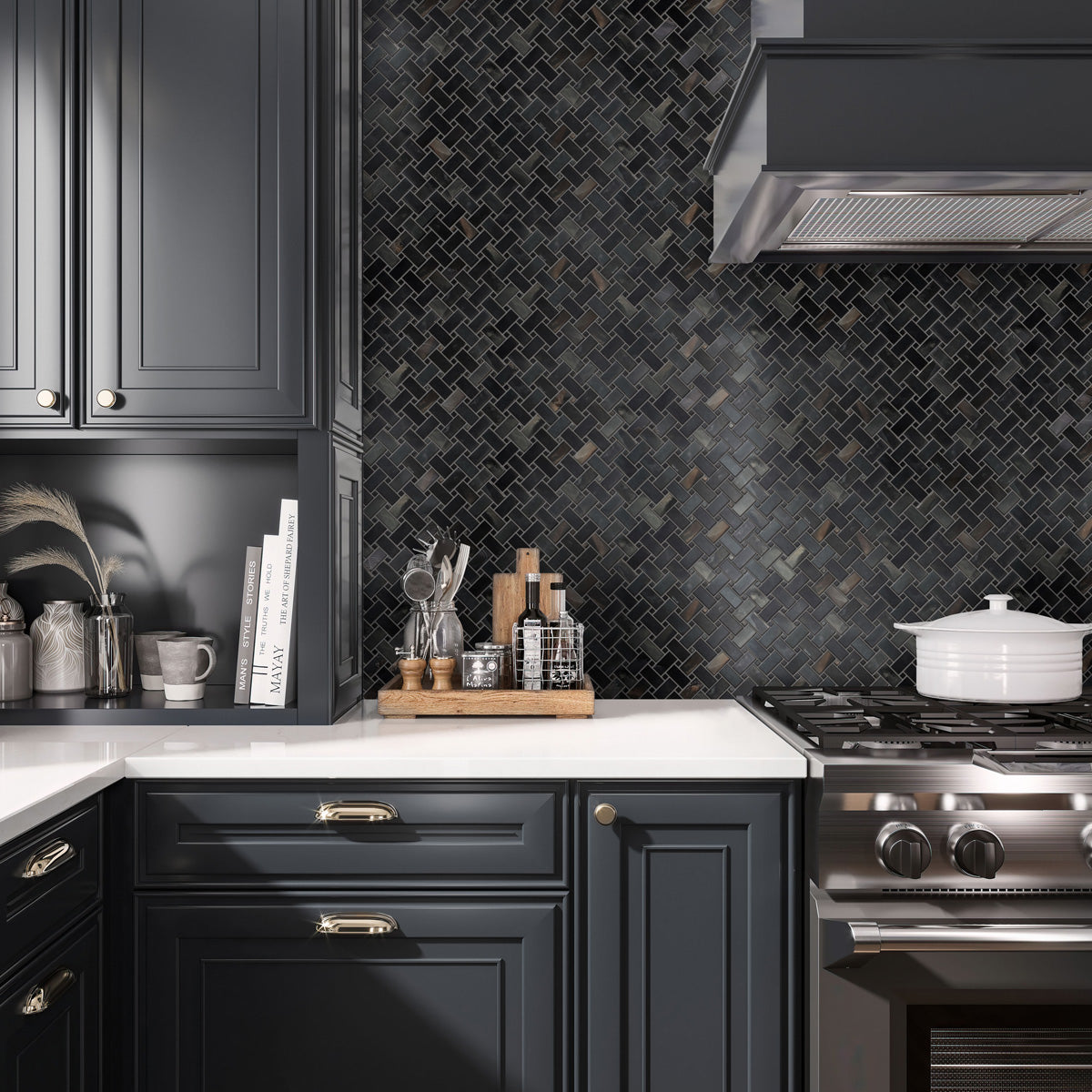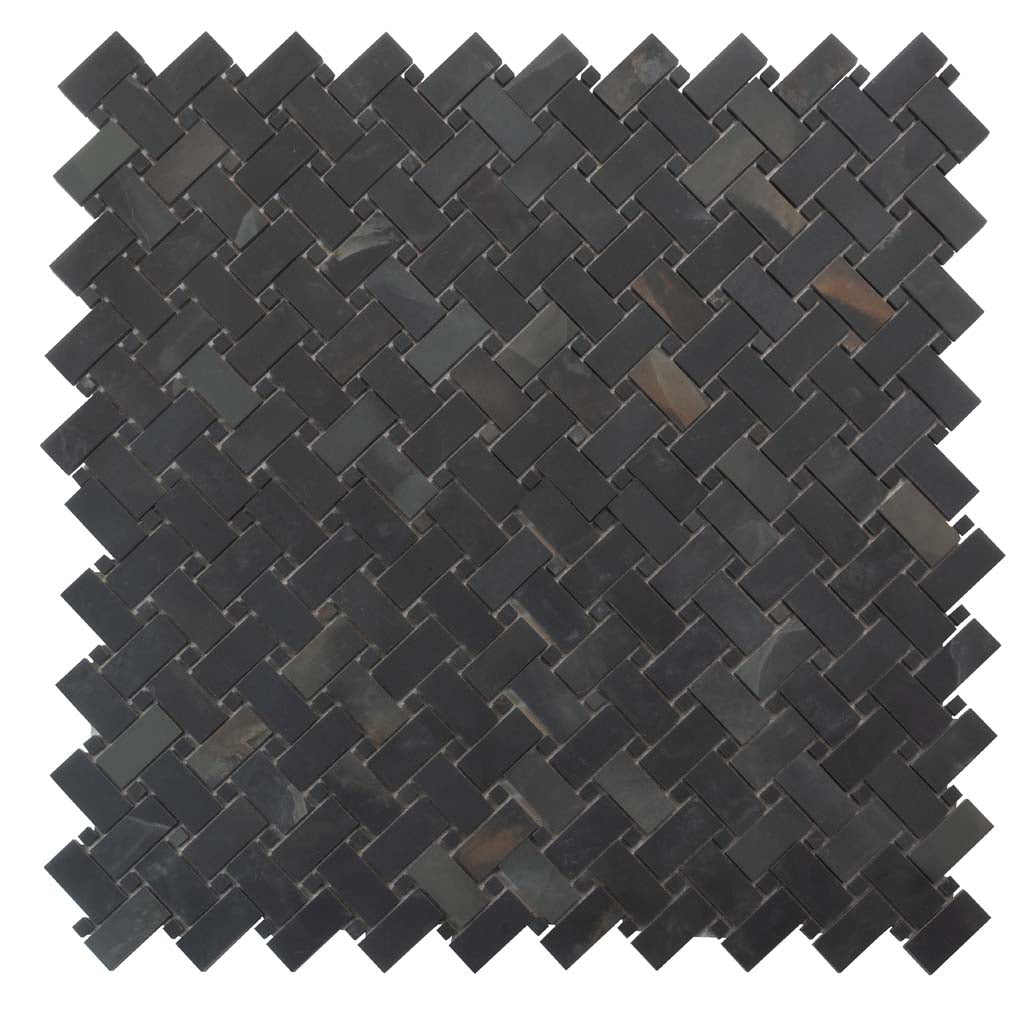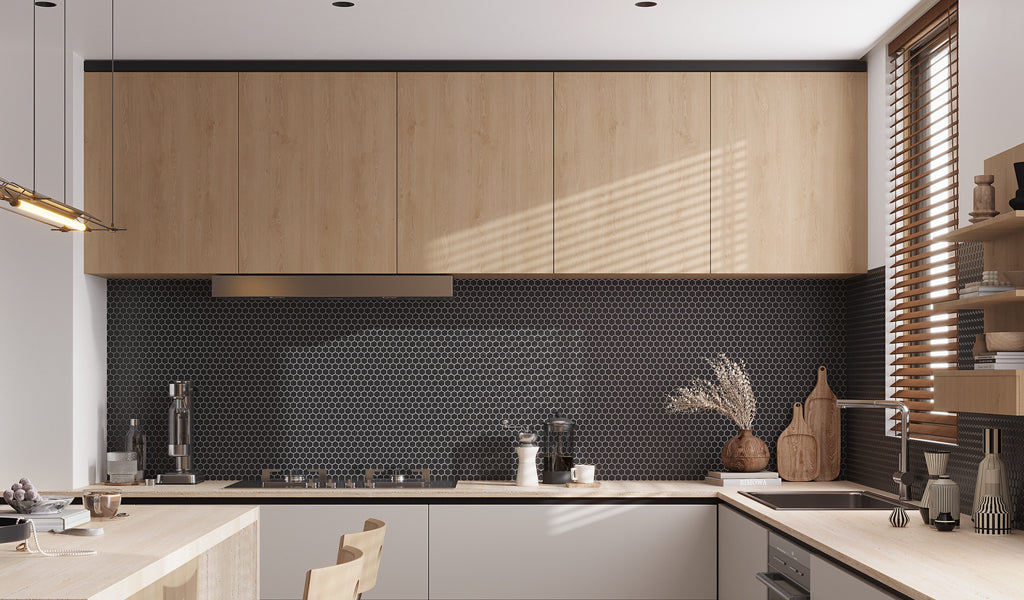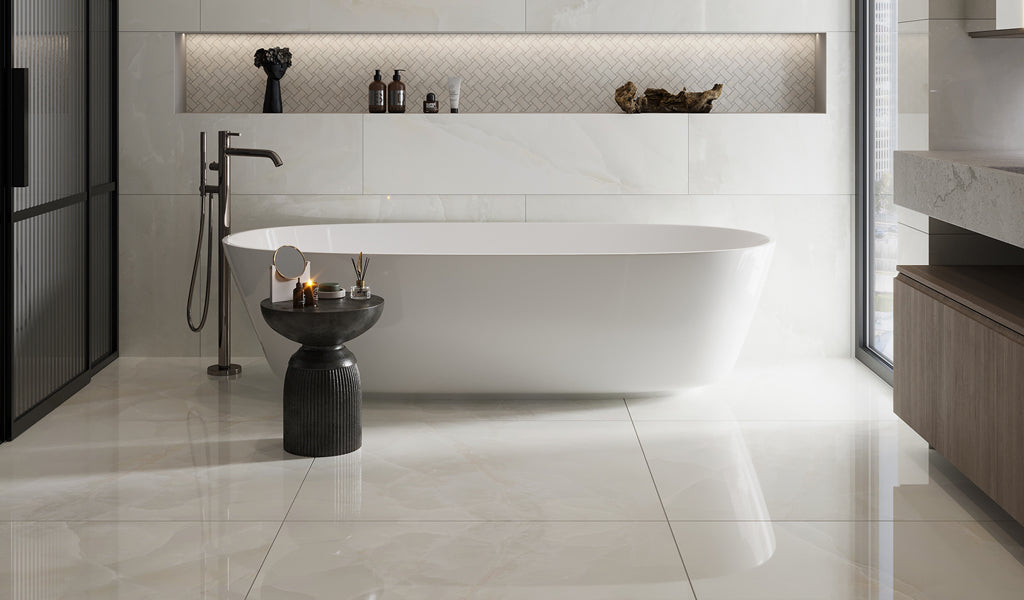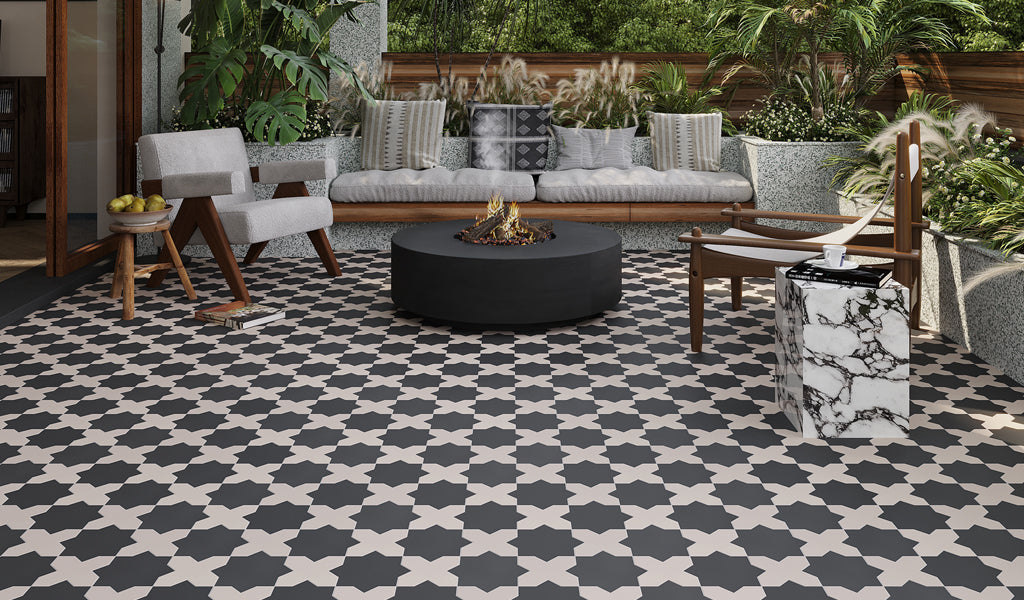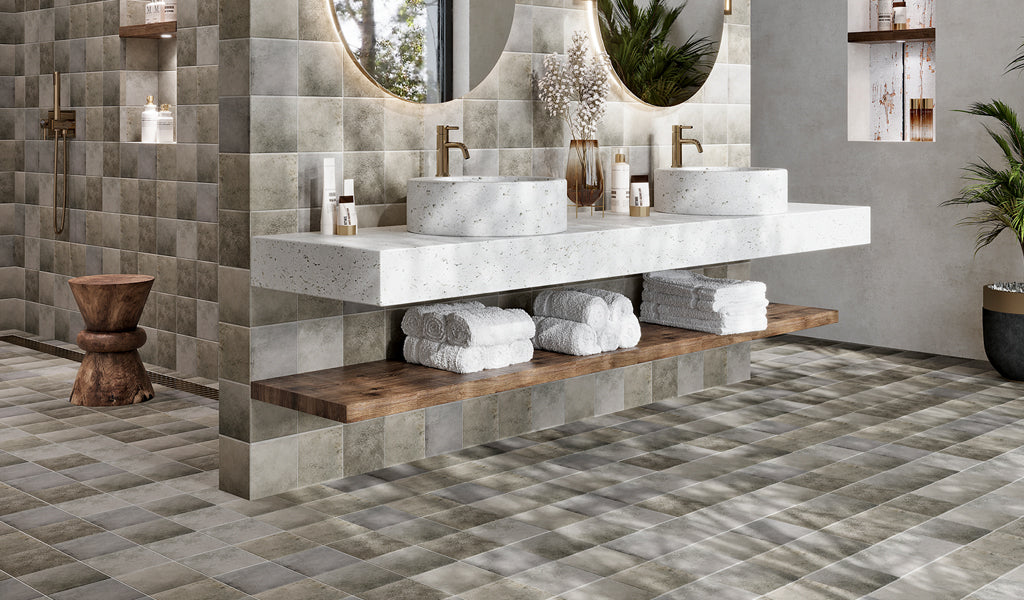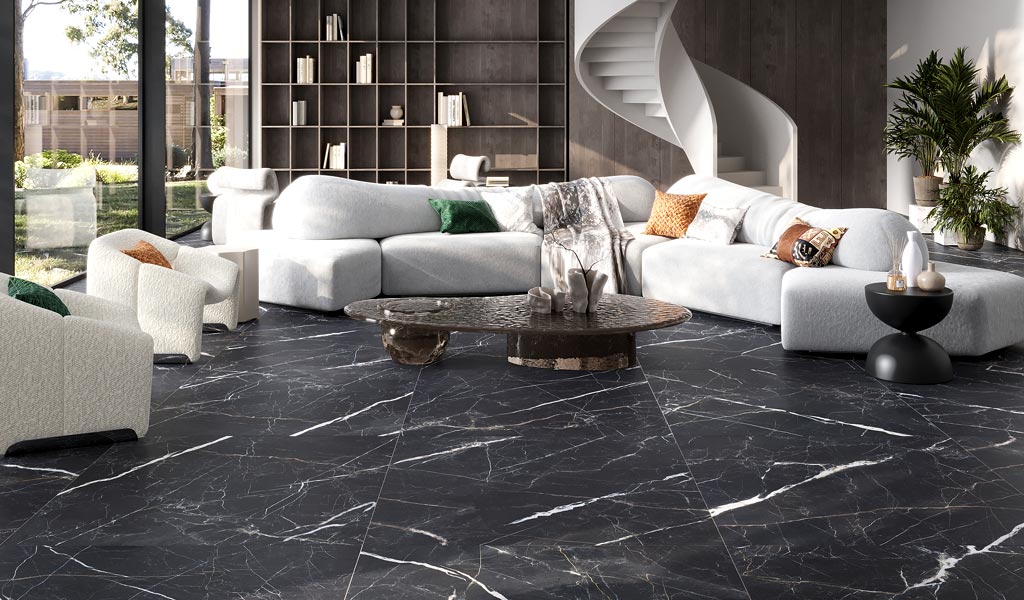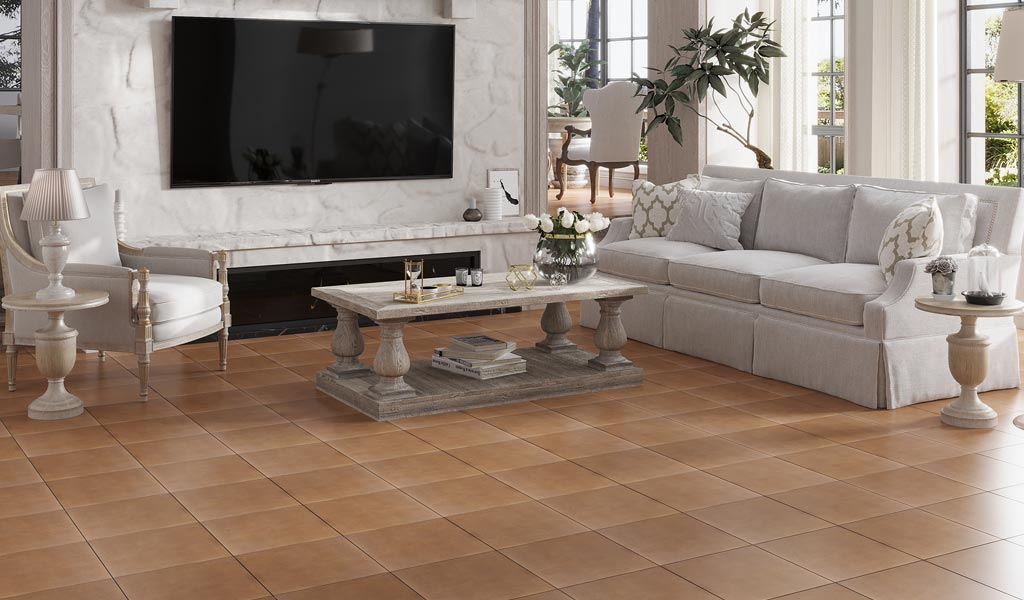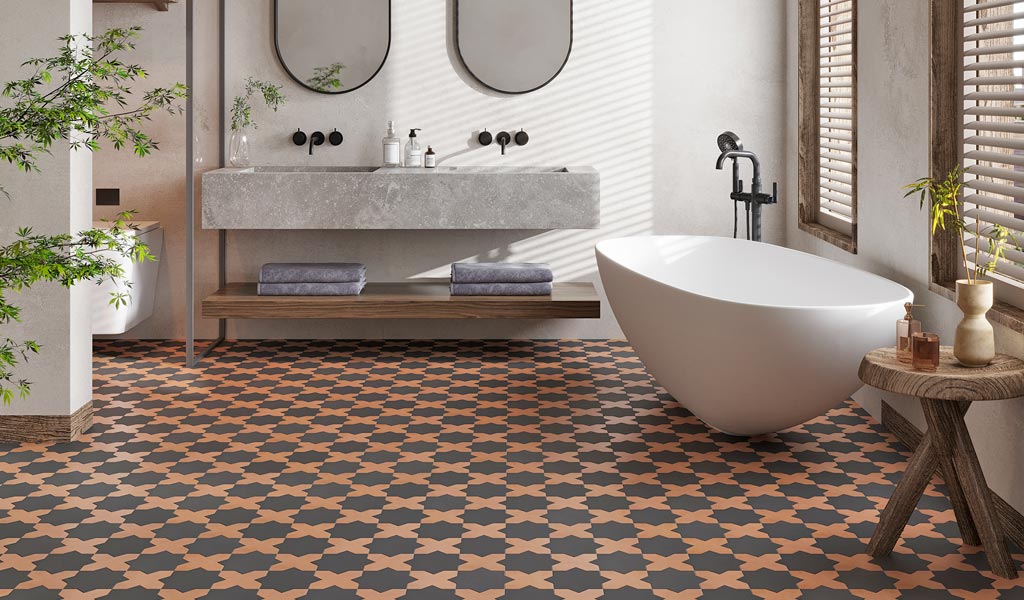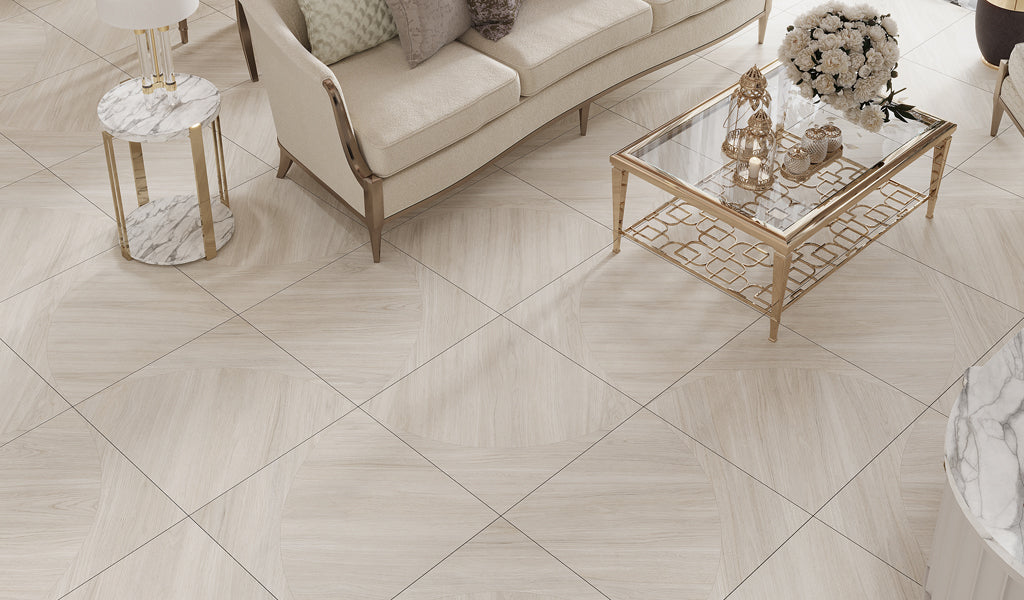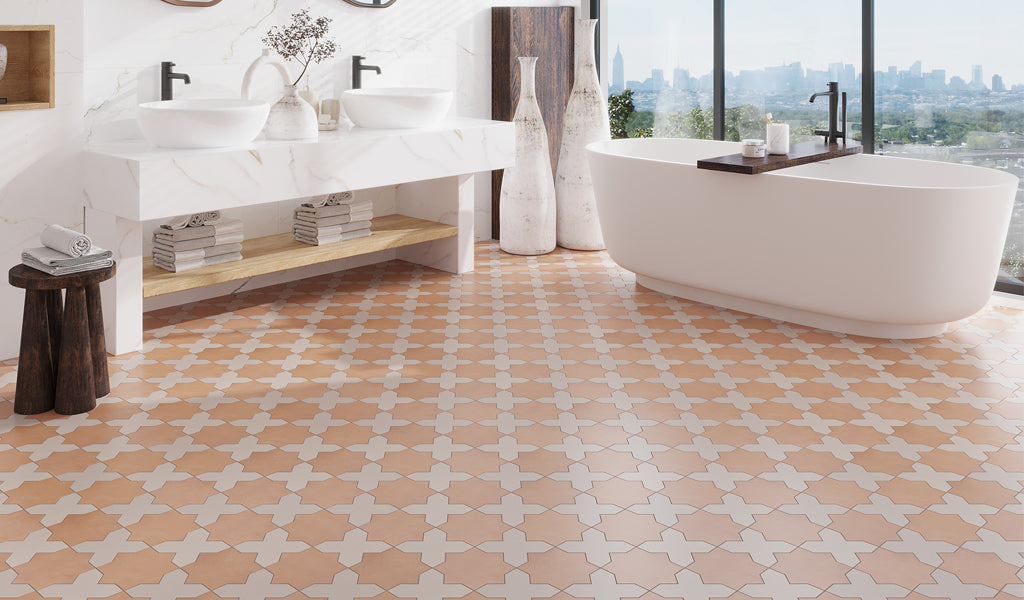What is Mosaic Tile?
Oct 22, 2025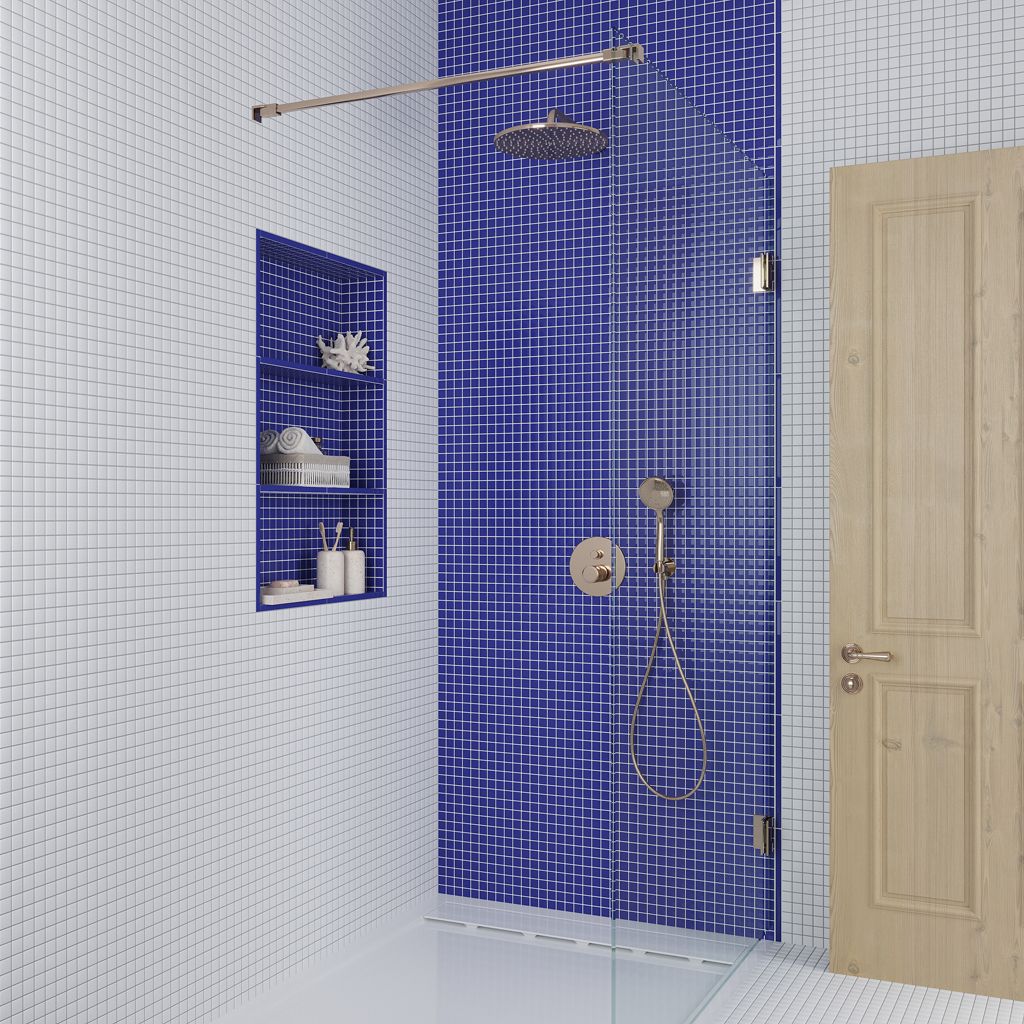
Mosaic tiling has the power to turn an ordinary room into a masterpiece of art. This is the oldest art in the world for your interior. Mosaic tile isn’t just a passing trend; it's a design journey. For thousands of years, from the regal floors of ancient Mesopotamia to the luxury baths of Roman emperors, these little creative pieces have been evolving simple surfaces into eye-catching focal points.
Today, mosaic tiles are anything but antique. They are a designer’s favorite choice, providing an exceptional blend of flexibility, texture, and breathtaking appearance. They are perfect for creating a unique kitchen backsplash or for a dramatic custom floor that engages guests. Mosaic tiles provide an opportunity to add a touch of personality or a customized look to create your dream space.
All about Mosaic Tile
Mosaic tile consists of small pieces of material, called tesserae, such as glass, ceramic, stone, or porcelain, arranged together to form decorative patterns, designs, or images. Traditionally, these pieces were carefully placed by hand. Today, for ease and practicality of installation, the concept has shifted: mosaic tiles now commonly come pre-arranged on mesh-mounted backing sheets.
The term "mosaic" generally applies to tiles that are smaller than 2 inches by 2 inches, though the design philosophy, the creation of a composite, detailed visual through the arrangement of smaller units, is what truly defines it.
What Does Mosaic Tile Look Like?
The look of mosaic tile is defined by its geometric design, texture, and visual flow. Mosaics introduce an interesting level of detail and fluidity into a space. A finished mosaic surface is defined by the high number of grout lines, an inherent result of the small size of tesserae. This many lines enhance the visual texture of the mosaic tile. The repetitive pattern and placement of the pieces give the surface a captivating look.
Mosaics are often used to create soft color gradients, smooth fades, or bold mural designs. Because the individual mosaics are small, it is easy to combine colors and create detailed patterns. For example, a marble mosaic leverages the natural veins and color variations in each piece to form a beautiful, dynamic surface. When made with glass, the tiny pieces catch and reflect light, making any wall or floor appear bigger or brighter.
In essence, a mosaic tile installation acts as an accent or a main feature, providing detail and contrast to larger, plainer design elements like countertops, primary wall colors, or large-format floor tiles.
Types of Mosaic Tiles
The variety of materials used for mosaic tiles is one of the main reasons for their popularity and flexibility. Choose from glass, marble, porcelain, or mother-of-pearl material.
1. Marble Mosaic Tile:
Marble tile offers unmatched luxury and class. Each piece is unique due to its natural veining and variations in shades and patterns; no two tiles are the same. They are incredibly durable and provide a timeless and modern elegance.
2. Glass Mosaic Tile:
Glass mosaic tile is one of the most popular types, offering limitless color options and finishes. They are non-porous and naturally reflective, creating an effect that helps bounce light around a room and can make it feel spacious. They are an excellent choice for kitchen backsplash, pools, and bathroom walls. Moreover, they are resistant to stains, scratches, water, and chemicals.
3. Porcelain Mosaic Tile:
Porcelain tile is one of the favorable choices of people, because it offers excellent strength and is simple to maintain. This is suitable for high-traffic areas, both indoors and outdoors. This Indigo Blue 12x12 Glossy Penny Round Porcelain Mosaic Tile is the ideal solution for both indoor and outdoor spaces, offering style and longevity.
4. Waterjet Mosaic Tile:
Waterjet tile is of mixed materials like marble and glass, resulting in classy designs that act as a stunning centre point. They come in unique shapes and patterns, offering a truly catchy look.
5. Mother-of-Pearl Mosaic Tile:
These mosaic tiles are crafted from organic materials, adding a luxurious, shimmering look to any room. Ideal for kitchen and bathroom space. The mother-of-pearl tiles are built to last and strong enough to deal with everyday elements.
Where can you use Mosaic Tiles?
Mosaic tiles can be used on any application. Their small size and mesh backing make them ideal for curved surfaces, too.
| Feature | Rationale for Use | Design Impact & Material Recommendations |
|---|---|---|
| Kitchen Backsplash | It is a low-traffic area, and mosaic tile offers an impactful look and is easy to clean and maintain. | Mosaic tile backsplash offers an appealing focal point. Choose from glass, waterjet mosaics, or marble tiles. Glass offers a reflective surface, making it brighter and open, and is also water-resistant and moisture-resistant. |
| Bathroom Walls & Niches | Non-porous materials are essential in wet areas. Niches demand smaller tiles. | Mosaic tiles add texture and character. Shell, glass, and polished natural stone are ideal for a spa-like feel. |
| Shower Floors | Their small format is naturally slip-resistant due to the major proportion of grout lines. | Mosaic Tiles offer the required grip underfoot for shower floors. Porcelain and glass are excellent choices for safety and comfort. Pebble mosaics are also suitable for this wet surface. |
| Pools & Water Features | Highly durable, water-resistant, and chemically stable materials are required. | Used for pool waterlines or entire pool interiors to create an intense shimmering effect. Glass mosaic tiles excel here. |
| Feature Walls (Accent Walls) | Used to transform a flat wall into a design statement or art piece. | Ideal for showcasing complex patterns like custom-made murals and medallions. Any material can be used to create a luxury look. |
| Fireplace Surrounds | Must be able to withstand heat exposure. | Can make a fireplace vow. Porcelain, glass, marble, and mother-of-pearl are all applicable for a fireplace surround. |
| Floors | Must be durable enough for foot traffic; higher grout means higher grip. | Residential entryways, hotel lobbies, and high-traffic commercial spaces. Porcelain is the ultimate choice for high-traffic areas. |
| Commercial Spaces | Demands long-lasting, striking appearances. | Creates unique branding and luxurious experiences in bars, restaurants, or theatre lobbies. Used on counters, facades, and high-impact walls. |
Benefits of Using Mosaic Tile
Mosaic tiles come with a lot of benefits, which are listed below:
Exceptional Design Flexibility:
Mosaic tiles offer countless design possibilities when it comes to material, color, shape, and pattern. They complement design styles from traditional to rustic, minimalist, or modern. They fit any decor theme. These wall and floor mosaic tile design ideas impactfully create custom artwork, murals, and ornaments.
Bringing Surfaces to Life:
The small, meticulously arranged mosaic sheet tiles, set with precise grout lines, create a layered, tactile effect. This transforms simple surfaces into dynamic, eye-catching features that enhance the whole look of the room.
Better Slip Resistance:
The mosaic tile pattern requires high amounts of grout line, which offers better traction and a textured surface. This makes them an excellent choice for wet areas like shower floors, bathrooms, and entryways, where safety is paramount.
Easy Installation:
While laying individual tesserae is an ancient art, modern mesh-mounted sheets make the installation of complex patterns faster and more accurate than ever before. This system reduces the need for individual alignment and allows for less cutting, even in complex areas or around curved surfaces.
Durability:
When properly installed and sealed (especially marble), mosaic materials like porcelain, stone, and glass are highly durable, resistant to everyday use. They last for years to come, fulfilling their promise of longevity.
How to Choose the Right Mosaic Tiles?
Choosing the right mosaic tile involves balancing aesthetic aspirations with the unmatched practicality of the installation area.
The primary factor in selecting a mosaic is where it will be used. For wet areas like showers, pools, choose glass or porcelain mosaic tile, which are resistant to stains, scratches, and water. Penny rounds and small hexagons offer excellent slip-resistant properties and an attractive look.
When it comes to installing mosaic tiles for high-traffic areas, choose materials like porcelain, marble, or glass. They are applicable for hallways, garage floors, and showers.
For feature walls and backsplash, opt for glass, waterjet, or mother-of-pearl tiles; they are bold and dramatic choices that offer a design statement.
Experiment with different shapes, choose from herringbone, hexagons, and penny rounds that add a contemporary, geometric flair to any room. In small areas, such as a shower niche or compact kitchen backsplash, using mosaics makes the area more detailed and intricate. In contrast, when used in an entryway, a mosaic pattern makes a powerful statement.
Grout color is also a critical factor in tiles. A high-contrast grout shade, for example, white tile with black grout, will accentuate the geometric pattern and texture. Matching the grout color will create a more cohesive look.
How to Install a Mosaic Tile?
Mosaic tiles offer a fantastic way to add glow and a finely detailed look to floors, walls, backsplash, and countertops. Modern installation is easy because the tiles are pre-attached to a mesh backing, reducing the boring work of placing each tiny piece.
 Step 1: Preparing the Surface:
Step 1: Preparing the Surface:
Ensure the surface is perfectly clean, dry, smooth, and flat. Any imperfections, bumps, or dust particles will be sent through the small mosaic pieces, resulting in a visible uneven final look. For wet surface areas, verify that the surface is waterproofed with a suitable membrane before applying tile.
 Step 2: Planning the Setup:
Step 2: Planning the Setup:
Before putting any adhesive, lay out the mosaic sheets dry. This is important for planning where cuts will fall and confirming that the pattern flows perfectly.
It is recommended that you start the layout from the center design point of the area and outward ( like the center of a shower wall or the main section of the kitchen backsplash). This makes sure that any required cuts are placed uniformly or in the least noticeable areas, such as corners.
Remember, mosaic sheets can slightly vary in size. Dry-fitting helps you adjust the spacing between the sheets so the seams are invisible and the pattern is in flow.
 Step 3: Lay down the Thin-Set Mortar:
Step 3: Lay down the Thin-Set Mortar:
Use a high-quality thin-set mortar suitable for your tile material and application. Apply the thin-set uniformly to the surface using a notched trowel.
 Step 4: Set the Tiles:
Step 4: Set the Tiles:
Firmly press the mesh-backed sheets into the wet thin-set, using a tapping block or a grout float. This ensures the surface of the sheet makes full contact and the tiles are set properly. Immediately check the alignment of the sheets and the consistency of the space. Adjust any single pieces or move the sheet as needed before the thin-set begins to set. Instantly clean any thin-sets that leak between the tiles with a soft sponge. This makes sure the grout has enough thickness to stick properly later.
 Step 5: Finally, Grout and Seal the Project:
Step 5: Finally, Grout and Seal the Project:
Once the thin-set is completely cured, it is time to apply grout. Use a grout float, working it diagonally across the tiles to press it forcefully into all the joints. Wipe out excess grout with a soft cloth; be careful not to pull the grout out of the joints. Use a sealant if it's marble mosaic tile. Sealing protects the material from staining and fading for the longevity and beauty of your mosaic installation.
Frequently Asked Questions:
1. What is the difference between tile and mosaic?
A tile is a single piece of hard-wearing material, like ceramic or stone, used for covering floors or walls. A mosaic is an artwork or surface covering created by assembling many small pieces of tile, glass, or stone, often called tesserae.
2. What is another name for mosaic tile?
Mosaic tile is also called tesserae. It can be used in almost all spaces, yet they are popularly used in pools, kitchens, and bathrooms.
3. Is mosaic tile ceramic or porcelain?
Mosaic tiles come in a wide range of materials, including ceramic, porcelain, glass, marble, and mother-of-pearl.
4. Does mosaic tile need grout?
Yes, mosaic tiles need grout. Grout fills the gaps between the many small pieces, which is must for creating a durable surface.
5. Is mosaic tile waterproof?
All our mosaic tiles, glass, marble, porcelain, and mother-of-pearl materials are resistant to water.
6. Can you mosaic tile on a shower floor?
Yes, mosaic tiles are an excellent choice for a shower floor. Their small size means more grout lines, which provide better traction and a non-slip surface, much needed for shower floors.
7. Are mosaic tiles difficult to clean?
Mosaic tiles are easy to clean and maintain. For regular cleaning, water and mild tile cleaner are sufficient. Do not use any harsh or strong cleaners, as they can damage the tile surface.
8. What are the cons of mosaic tile?
Mosaic tiles may be a little expensive when it comes to installation, due to the precision and time required for placement, but their detailed look matches the cost. It also requires more amount of grout, but stays strong and durable.

